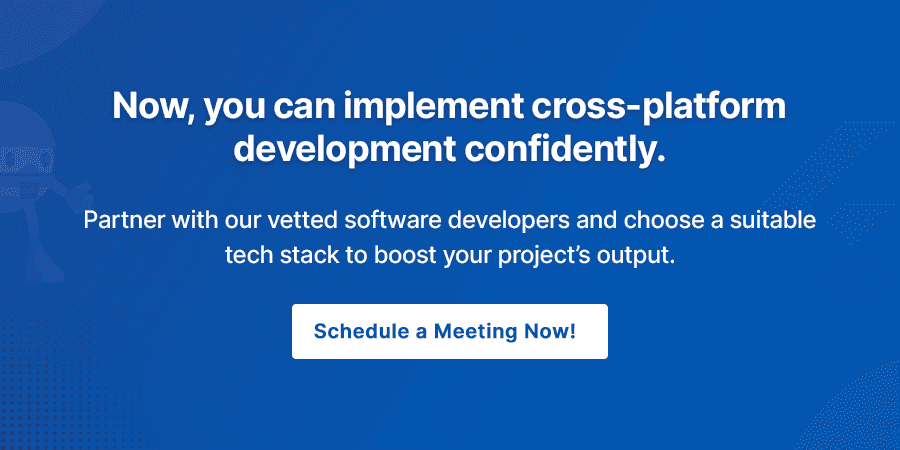
.NET MAUI vs Flutter: Cross-Platform Frameworks Face-Off
Cross-platform websites like Airbnb, LinkedIn, WhatsApp, etc., are designed to provide consistent user experiences on various devices and browsers. All of them have proved their power!
Cross-platform frameworks are becoming more and more crucial in the world of mobile app development because they let developers make apps for several platforms out of a single codebase. Microsoft’s .NET MAUI and Google’s Flutter are the two most well-liked solutions in this field.
The fight between .NET MAUI vs Flutter will not be easy, as both are powerful cross-platform frameworks. Although in this blog, we have put our best to cover all the modes of comparison of .NET MAUI vs Flutter.
Developers are constantly searching for quicker, easier, and less expensive ways to get their products to market due to the continuously increasing demand for applications.
.NET MAUI and Flutter are two names that jumped up when developing robust desktop and mobile apps with flawless functionality is aim.
.NET MAUI, a framework by Microsoft for building native cross-platform mobile and desktop applications, and Flutter, an open-source UI software development kit by Google, used to create natively compiled applications for mobile, web, and desktop from a single codebase, using the Dart programming language.
A quick comparison of the two is covered in the table below.
.NET MAUI VS Flutter
| Parameter | .NET MAUI | Flutter |
| Language | C# and XAML | Dart |
| Platform Support | Android, iOS, macOS, Windows | Android, iOS, Web, Desktop (experimental), and more |
| UI components | Native UI components | Built-in customized UI components |
| Technology stability | Evolving technology | Mature technology |
| Learning Curve | Familiar to .NET developers | Learning Dart, but easy for JavaScript developers |
| Performance | Efficient due to direct native control access | Efficient due to compiled to native ARM code |
| Popularity | Growing with strong Microsoft backing | Widely popular, especially in mobile app development |
Both technologies promise to make life easier for developers and clients by speeding up development. Thus, choosing one out of them is not going to be easy.
Let’s begin the battle of Flutter, the industry leader and recently released .NET MAUI.
What is .NET MAUI?

.NET MAUI (Multi-platform App UI) is an open-source and cross-platform framework developed by Microsoft for creating mobile and desktop applications. .NET MAUI leverages the power of the .NET ecosystem and offers features like Hot Reload for rapid development. It’s an efficient choice for developers seeking to create cross-platform applications easily.
It’s an evolution of Xamarin.Forms designed to simplify multi-platform app development. It shares a lot of similarities with Xamarin.Forms, another framework that lets you make cross-platform apps with just one codebase.
Read more about .NET MAUI vs Xamarin.
The main objective of .NET MAUI is to develop as much of your app’s functionality and UI design as possible in a single project.
Learn the difference between .NET MAUI and Xamarin to make the right choice for your business!
Features of .NET MAUI
The amazing features of .NET MAUI make it a powerful framework for building cross-platform mobile and desktop applications. Let’s cover some common ones
- Native-Like UI: Offers a rich set of UI controls and layouts for creating native-like interfaces.
- Integration with .NET 6: Full integration with the latest .NET platform, providing access to modern language features and libraries.
- Hot Reload: Real-time code and UI updates for faster development and debugging.
- Platform-Specific Customization: Allows fine-grained control over platform-specific elements when needed.
- Growing Ecosystem: A growing community, plugins, and resources for support and extension.
- Cross-Platform Debugging: Debug and test apps across platforms with ease.
- Xamarin Transition: Easy migration path for Xamarin developers to transition to .NET MAUI.
- Adaptive UI: Supports responsive design for varying screen sizes and orientations.
What is Flutter?

Flutter is an open-source UI software development kit by Google for building natively compiled mobile, web, and desktop applications from a single codebase. It is one of the best frameworks for mobile app development. It uses the Dart programming language and offers a rich set of pre-designed widgets, a reactive framework, and a fast development cycle. Find what’s new in the latest version, Flutter 3.7.
Flutter is not a framework or library, unlike other well-liked solutions. It consists of an SDK with development tools like libraries and compilers, as well as a framework with a large number of widget-based, user-interface elements that can be customized.
Top Flutter mobile app development agencies in India use this technology to create aesthetically pleasing, native-like interfaces and compile the code into effective native machine code for multiple platforms, including iOS and Android.
Features of Flutter
Flutter consists of the below-given features to streamline cross-platform development, offering flexibility, performance, and an attractive user interface.
- Dart Language: Utilizes the Dart programming language known for its performance and productivity.
- Hot Reload: Real-time code changes for rapid development and debugging.
- Rich Widget Library: Offers a wide range of customizable and extensible UI widgets for building versatile interfaces.
- Expressive UI: Delivers visually appealing, pixel-perfect designs and consistent user experiences.
- High Performance: Compiles native ARM code for excellent performance.
- Cross-Platform Consistency: Ensures consistent app behavior across various platforms.
- Community and Ecosystem: Supported by a large and active developer community with a growing ecosystem of packages and plugins.
- Material Design and Cupertino: Provides two distinct design libraries for native Android and iOS looks.
.NET MAUI VS Flutter: Head-to-Head Comparision
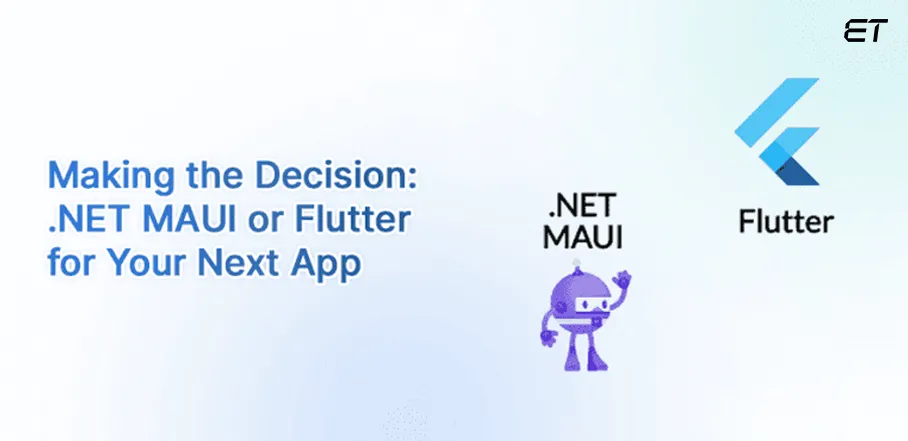
.NET MAUI and Flutter are both cross-platform frameworks for building native applications, but they differ in their ecosystems, languages, and approaches. Here’s a concise comparison:
Technical Factors
Learning Curve: .NET MAUI vs Flutter, which is easier to learn?
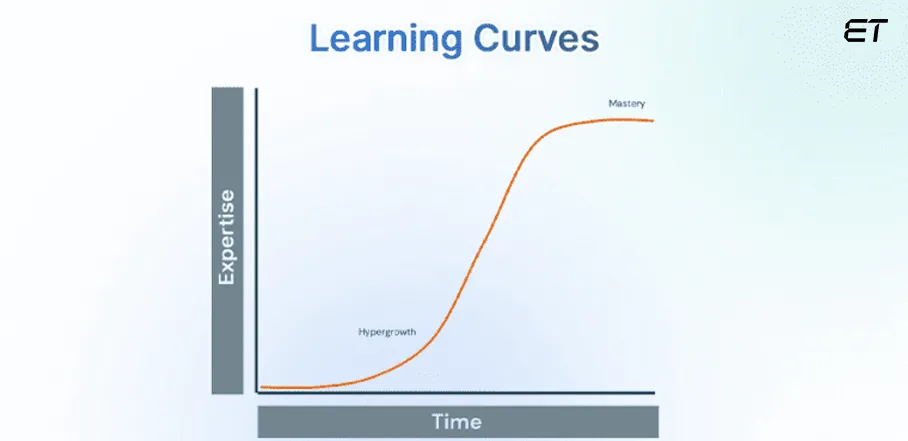
The learning curve depends on your existing skillset and project needs, with .NET MAUI favoring .NET developers and Flutter appealing to those comfortable with Dart and a widget-based UI paradigm.
The learning curve for .NET MAUI is relatively easy for developers experienced with C# and .NET. But it can take some time for people unfamiliar with C# to become up to speed with the language and infrastructure.
Find the top .NET developers’ skills essential for every project.
In contrast, Flutter uses Dart and its widget-based approach, which may require learning new concepts, but it’s hot-reload feature aids rapid development and experimentation.
Discover the top essential skills that every .NET developer must master to drive success and innovation.Explore the must-have expertise that can elevate your project from good to outstanding!
Widgets in Flutter
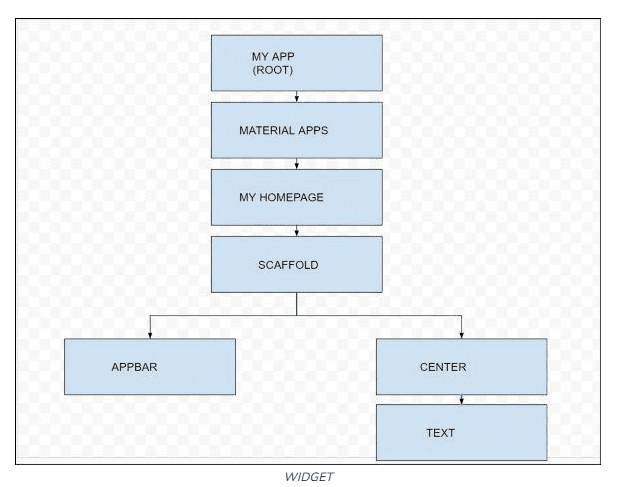
-
Development Processes: .NET MAUI vs Flutter, which allows fast and efficient development?

These two technologies aim to make it easier for web developers to create applications. But .NET MAUI is a new framework, development is still in its early stages, and some features might not be as well-developed as those in Flutter.
With capabilities like hot-reload and real-time visual tree updates, .NET MAUI provides a quick and effective development process. Furthermore, XAML Hot Reload, a new markup language, simplifies the declarative syntax needed to develop user interfaces. This can help .NET developers used to working with XAML develop more quickly and effectively.
Speaking of Flutter, it is renowned for its quick development process because of its hot-reload functionality. Furthermore, Flutter has an extensive collection of pre-made widgets that make it quickly and effectively create user interfaces.
-
Technology Stability: .NET MAUI vs Flutter, which is more reliable and stable?

Technology stability is a crucial factor to consider when choosing a cross-platform framework. Web and mobile app development companies always seek a reliable and stable framework.
As we know, .NET MAUI is an improved version of Xamarin.Forms is a dependable and sturdy platform. This implies that all of Xamarin.Forms reliability and stability are passed down to .NET MAUI, as well as incorporating upgrades and new features. Furthermore, Microsoft has a history of developing dependable technologies, which is encouraging for the stability of .NET MAUI.
Flutter, developed by Google, has rapidly gained popularity and offers stability with frequent updates. However, its ecosystem may not be as mature as NET’s.
-
UI Development: .NET MAUI vs Flutter, which can develop feature-rich and responsive UI?

Both Flutter and .NET MAUI offer capabilities and tools to assist dedicated developers in building stunning and responsive user interfaces.
.NET MAUI offers a cross-platform native-like user interface. It provides a variety of UI layouts and functions that are useful for building feature-rich and adaptable user interfaces. It creates consistent and platform-specific user interface components by utilizing Xamarin.Forms and the .NET toolbox.
However, with a large selection of customizable UI widgets and animations, Flutter offers a highly configurable and performant UI framework. Because of its proprietary rendering engine, Flutter is perfect for creating UIs that are highly interactive with fluid and efficient animations.
-
Language Comparision: .NET MAUI vs Flutter, which is more powerful?

The primary distinction between Flutter and .NET MAUI is in the programming language employed.
.NET MAUI primarily uses C# for app development, benefiting from its established presence in the software industry. .NET Developers can leverage their existing C# skills, widely adopted in enterprise environments.
Ready to future-proof your applications? Discover the step-by-step guide to converting your .NET Framework projects to .NET Core and unlock a world of performance and cross-platform possibilities.
Flutter, on the other hand, relies on the Dart language, which is less commonly used than C#. Learning Dart may be necessary for newcomers, though its syntax resembles JavaScript, making it approachable for web developers.
Both languages have their strengths, with C# offering extensive ecosystem support and, responsive user interfaces. Your language preference and existing skillset should influence your choice between the two frameworks.
-
Cross-Platform Capabilities: .NET MAUI vs Flutter, which offers strong cross-platform capabilities

With Flutter and .NET MAUI, developers can write code only once and have it run on different platforms, enabling the development of cross-platform applications. Companies save money and development time with this method.
Flutter and .NET MAUI employ distinct methods to accomplish cross-platform functionality.
Flutter uses a single codebase to create applications for multiple platforms (Android, iOS, web, and desktop) by using a “write once, run anywhere” strategy, in which all platforms can use the same codebase. This method simplifies application maintenance and updates because all updates are reflected across all platforms.
Cross-platform programming is approached significantly differently with .NET MAUI. IOS, Android, macOS, and Windows applications can be created using a single, unified API. It can, however, utilize the built-in features of every operating system because it has a distinct implementation for each platform. With this method, the program will function flawlessly across all platforms and maintain its native appearance and feel.
-
Ecosystem: .NET MAUI vs Flutter, which offer robust tools and libraries?

Another crucial aspect to consider while selecting an app development framework is the ecosystem. The libraries and tools developers can use to build, test, and launch their apps are part of the ecosystem.
Considering .NET MAUI, Microsoft offers a wealth of resources for developers, and the community is expanding fast. With support for both Visual Studio and Visual Studio Code, access to the NuGet package management, and the rich ecosystem of Xamarin.Forms., this framework provides powerful development tools. Furthermore, .NET MAUI facilitates collaboration with Azure services, streamlining the development and implementation of cloud-based applications.
However, Flutter’s pub.dev package manager provides a large selection of plugins and packages. Additionally, Flutter easily interacts with well-known IDEs and code editors, streamlining and expediting development.
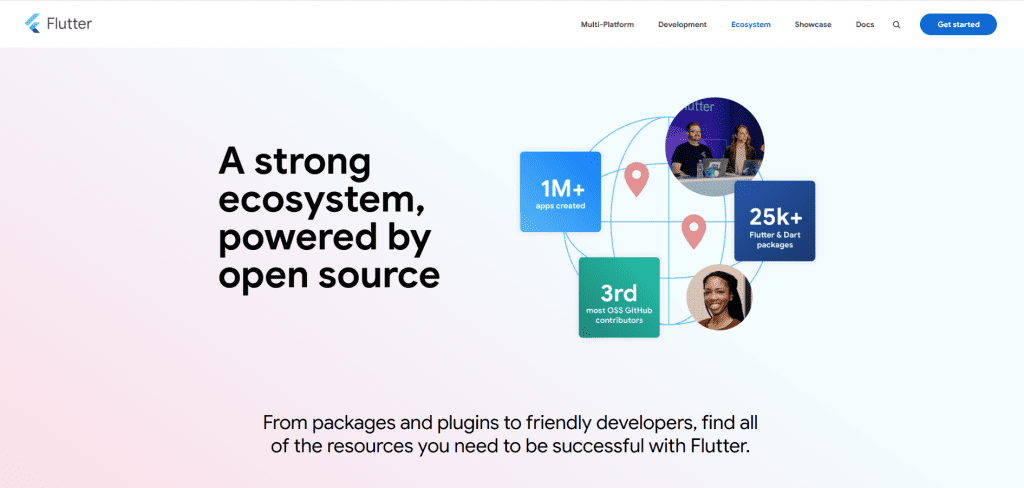
Business Factors
-
Market Popularity: .NET MAUI vs Flutter, which is more popular?

Flutter is leading the market in terms of popularity (it was used by 42% of developers worldwide in 2022). Flutter is more popular than .NET MAUI in terms of search interest, according to Google Trends.
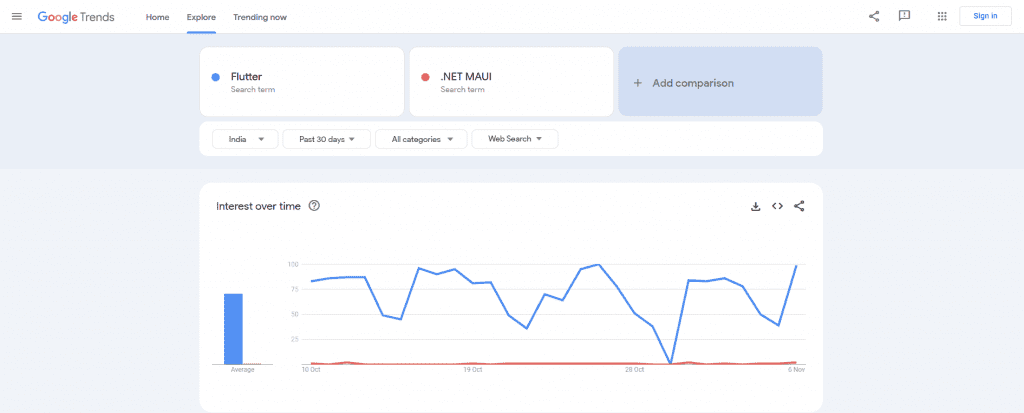
In contrast, .NET MAUI is a relatively new framework. It was published in May 2023 and is an evolution of Xamarin.Forms. Because of this, it hasn’t yet become as well-known as Flutter. It’s crucial to remember that Microsoft can use its current customer base to promote .NET MAUI, it has an edge in market penetration. It is quickly becoming increasingly well-known; the GitHub metrics below prove it.
| Technology | GitHub Stars | GitHub Contributors |
| .NET MAUI | 20.2k | 512 |
| Flutter | 158k | 1296 |
-
Cost Efficiency: .NET MAUI vs Flutter, which is more economical?

Companies must select a framework that is affordable and provides a strong return on investment. Both Flutter and .NET MAUI are competitive solutions in terms of cost-effectiveness.
Since Flutter is an open-source framework, there are no licensing costs, and it is free to use. Because of this, it is a desirable choice for companies searching for a low-cost solution. Flutter also provides a quick development process, ultimately saving companies money and time.
In contrast, .NET MAUI has no license costs and is free and open-source, but companies might have to pay extra for extra services and tools, such as Visual Studio Enterprise or Azure DevOps, which drives up the price.
-
Performance: .NET MAUI vs Flutter, which is faster?

NET MAUI and Flutter both aim for good performance, but differences exist. Let’s see how.
On some platforms, .NET MAUI can perform better since it makes use of native UI components. Additionally, it facilitates Ahead of Time (AOT) compilation, which speeds up app launches and uses less memory. Moreover, lazy loading of controls is supported by .NET MAUI, which helps enhance performance by loading just the components that are required at runtime.
Optimizing Performance in .NET Web Applications
Flutter offers quick and fluid UI performance with its own rendering engine. The rendering engine of Flutter offers extremely smooth animations and transitions in addition to hardware-accelerated graphics capability. Furthermore, Flutter facilitates Ahead of Time (AOT) compilation, which speeds up app starting and uses less memory, and Just In Time (JIT) compilation, which can accelerate development.
While both can deliver performant applications, the choice may depend on specific project needs and the importance of platform-native optimizations. Benchmarking and profiling on target platforms are crucial for assessing and ensuring optimal performance in either .NET MAUI or Flutter applications.
-
Community Support: .NET MAUI vs Fluttter, which comes with extra support?

Flutter’s large and vibrant developer community is one of its biggest benefits over .NET MAUI. To facilitate the learning and adoption of the framework, this community is continuously creating and sharing materials, including articles, tutorials, and sample projects.

Developing a vibrant community is another focus of .NET MAUI. Despite being a newcomer to the market, it may rely on the vibrant and sizable .NET community, which has a wealth of resources available on the Microsoft website and other online forums.
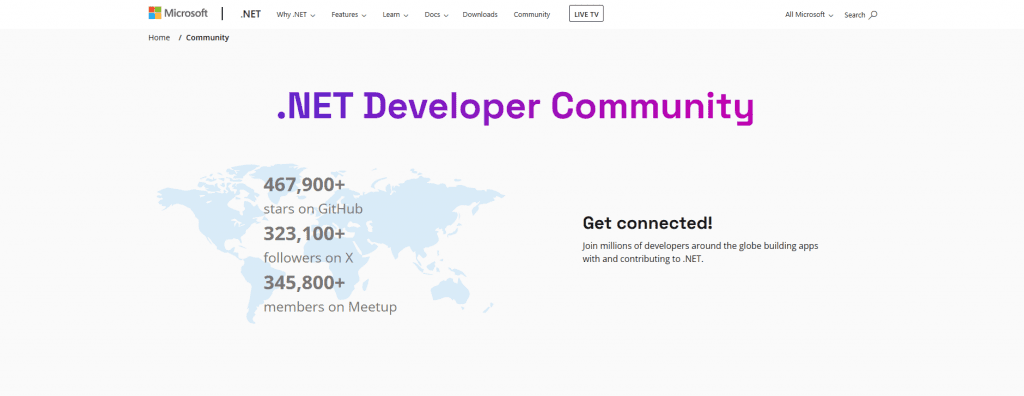
Furthermore, Xamarin.Forms, which has a vibrant developer community and online resources, provides all the resources and support that .NET MAUI developers need.
.NET MAUI vs Flutter: Best Use Cases
When to use .NET MAUI?
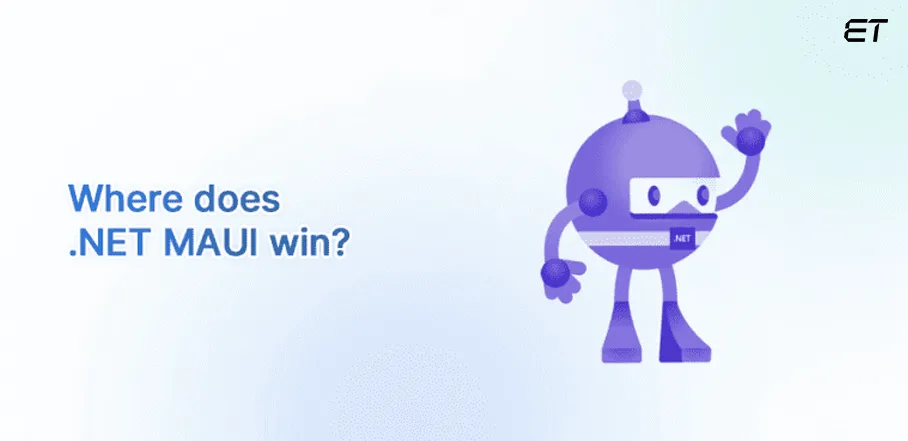
Use .NET MAUI when:
- Your goal is to develop applications that run on Android, iOS, macOS, and Windows with a shared codebase.
- You are a .NET developer and want to leverage the extensive .NET ecosystem, tools, and libraries.
- Maintaining a consistent and native-like user interface across different platforms is crucial for your project.
- You prefer using native controls for better performance and a seamless user experience on each platform.
- Your project involves building enterprise-level applications or productivity tools.
- You have existing expertise in C# and XAML, making development more efficient and accessible.
When to use Flutter?

Use Flutter when:
- Your want to build applications for various platforms, including mobile (iOS, Android), web, and desktop, using a single codebase.
- You need a high degree of customization and a visually appealing user interface, as Flutter allows for pixel-perfect designs with its widget-based approach.
- The ability to experiment, test, and iterate quickly with Flutter’s hot reload feature is essential for your development workflow.
- You are comfortable with or willing to learn Dart, a language with a syntax similar to JavaScript, for both frontend and backend development.
- You value a growing and active community and access to a wide range of third-party packages and plugins available in the Flutter ecosystem.
- Your application requires smooth animations, and you appreciate Flutter’s performance through compilation to native ARM code.
Conclusion
It can be difficult to select the best platform for your upcoming project. Even though a technology seems inferior on paper, others can better meet your needs. Therefore, it is essential to understand the benefits and drawbacks of the various options.
In the realm of cross-platform software, Flutter and .NET MAUI are formidable rivals. Which one to choose? This decision is based on the particular requirements and tastes of the development team and the project. It is advised that you assess the advantages and disadvantages of each framework in light of your project’s requirements and select the most appropriate one.
We suggest utilizing Flutter if you’re starting from scratch to create a cross-platform project. It is distinct because it is a tried-and-true setting that has been continuously improved. Since .NET MAUI has all the necessary features to become technically equal to its main rivals, it may be considered in the future.
We hope that after reading this blog, you will be better able to select the best option for your next project.
You still have some doubts!
Connect with our dedicated mobile app development team now!
Ready to transform your mobile app? Connect with our dedicated mobile app development today and start building something extraordinary. Click on the button to get in touch and bring your ideas to life with expertise and passion!
Frequently Asked Question
Do I need to learn .NET Core to understand .NET MAUI?
Yes, understanding .NET Core is beneficial for working with .NET MAUI. .NET MAUI builds on the foundation of .NET 6 (successor to .NET Core), utilizing its capabilities for cross-platform development. Familiarity with .NET concepts and C# will facilitate a smoother transition to .NET MAUI development.
Why is Flutter the best cross-platform framework?
Flutter is considered a top cross-platform framework due to its single codebase for mobile, web, and desktop, expressive widget-based UI, and high-performance compiled code. Its extensive community support, rich documentation, and backing from Google contribute to its popularity and versatility in cross-platform development.
What is the future of .NET MAUI in mobile app development?
The future of .NET MAUI in mobile app development looks promising, backed by Microsoft’s commitment to modern cross-platform development. With ongoing updates, support, and integration with .NET, it is poised to become a significant player, offering a streamlined approach for developers to build native applications across various platforms efficiently.


